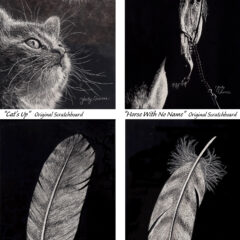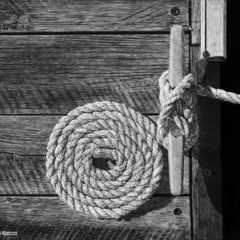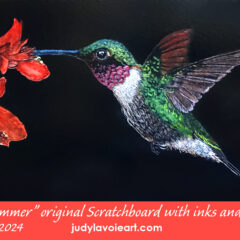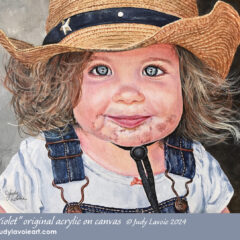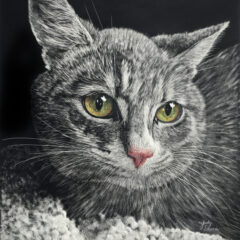In my newest painting, a commission called “Greenhouse & Gardens,” I used a technique of layering in the bottom right corner, to get the effect of masses of leaves. This technique is often called GLAZING. I do this in acrylics by painting with white (I actually use acrylic gesso for maximum opacity), letting it dry, then painting over the white with very transparent acrylic colors. As with watercolors, some acrylic pigments are more transparent than others. I can choose those colors which are naturally transparent, or thin others with acrylic glazing liquid (I use Golden brand) to make them more transparent. Then I paint the color over the entire area where I used the white gesso, and it covers it with color. Often times I repeat the whole process, glazing layer upon layer. It is a good technique for creating depth.
Here are six steps showing how I used this method for the leaves of the zinnias in the garden:
I have used this method in many of my other paintings, since it creates great depth. I suppose my experience as a watercolor artist influences me, since watercolors are naturally transparent and often layered in glazes.
 I especially like this method for creating thick fur on an animal, and have used it in many of my pet portraits. Here you can see how I used the glazing to create strands of hair on my dog Darla’s floppy ears in “Into the Wind” and the overlapping fur on the Scotty’s face in my painting “Single Malt“. I painted layer upon layer, using white gesso and various transparent colors and brown tones, to create the background of dried brown leaves in “Three Sisters“, my painting of three Lady Slipper wildflowers.
I especially like this method for creating thick fur on an animal, and have used it in many of my pet portraits. Here you can see how I used the glazing to create strands of hair on my dog Darla’s floppy ears in “Into the Wind” and the overlapping fur on the Scotty’s face in my painting “Single Malt“. I painted layer upon layer, using white gesso and various transparent colors and brown tones, to create the background of dried brown leaves in “Three Sisters“, my painting of three Lady Slipper wildflowers.
Give this method a try to create wonderful effects of depth in your own acrylic painting adventures!




